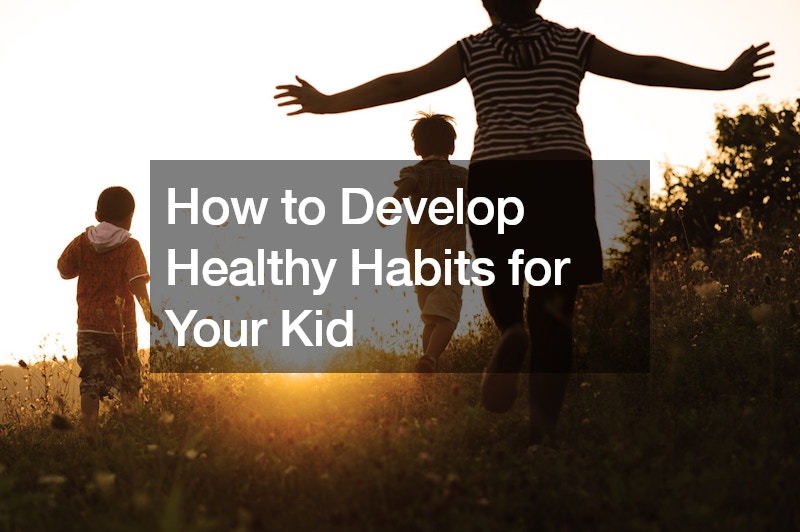
Ensuring your child develops healthy habits from a young age sets the foundation for a lifetime of well-being. By focusing on nutrition, physical activity, and balanced routines, you can help your child grow strong, stay focused, and be their best self. Here are some practical tips to guide you in nurturing healthy habits for your child.
Balanced Nutrition
A balanced diet is crucial for your child’s development. The MyPlate model is a helpful guide, emphasizing five essential food groups: vegetables, fruits, grains, protein foods, and dairy.
Incorporating foods from each group ensures your child gets the necessary vitamins, minerals, and energy they need.
- Vegetables and Fruits: Aim to fill half your child’s plate with a variety of colorful fruits and vegetables. These are packed with essential nutrients and fiber.
- Grains: Choose whole grains like whole-wheat bread, brown rice, and oatmeal, which provide long-lasting energy and fiber.
- Protein Foods: Include lean meats, beans, nuts, and seeds in your child’s diet to support growth and muscle development.
- Dairy: Opt for low-fat or fat-free dairy products, which are crucial for strong bones and teeth.
Smart Snacking
Understanding the difference between “sometimes” foods and “anytime” foods can help in making healthier snack choices.
- Anytime Foods: These include fruits, vegetables, whole grains, protein foods, and low-fat dairy products. These can be eaten regularly as part of a balanced diet.
- Sometimes Foods: Treats like cakes, cookies, ice cream, and chips should be enjoyed occasionally. Teaching moderation helps children appreciate these treats without overindulging.
Healthy Beverages
Beverage choices are just as important as food choices. Many drinks marketed to children contain high levels of sugar, which can lead to various health issues.
- Best Choices: Encourage your child to drink water, low-fat or fat-free milk, and 100% fruit juice in moderation.
- Limit Sugary Drinks: Avoid sodas, energy drinks, fruit punches, and sports drinks, which are often loaded with sugar and provide little nutritional value.
Daily Physical Activity
Regular physical activity is essential for maintaining a healthy weight, building strong bones and muscles, and improving overall well-being. Children need at least 60 minutes of physical activity every day.
- Fun Activities: Help your child find activities they enjoy, such as riding a bike, skateboarding, swimming, dancing, or playing sports. Even simple activities like running around at recess or chasing their older siblings can be beneficial.
- Structured Play: Consider enrolling your child in organized activities like jump toddler sessions, which offer fun, age-appropriate physical exercise in a safe environment.
Interactive Learning
Games and interactive activities can make learning about nutrition and exercise fun and engaging for children.
MyPlate Blast Off Game: Encourage your child to play educational games like the MyPlate Blast Off, where they fuel a rocket ship with balanced nutrition and physical activity to reach Planet Power. These types of games can reinforce healthy eating habits and the importance of staying active.
Lead by Example
Children often mimic the behaviors of their parents. By modeling healthy eating and active living, you can set a positive example for your child to follow.
- Eat Together: Family meals are an excellent opportunity to model balanced eating and enjoy quality time together.
- Active Lifestyle: Show enthusiasm for physical activities. Whether it’s a family bike ride, a walk in the park, or participating in sports, your involvement can inspire your child to be active.
Utilize Available Resources
There are many resources available to help you and your child learn about healthy eating and physical activity.
- ChooseMyPlate.gov: Find recipes, games, and tips on building a balanced diet.
- LetsMove.gov: Learn about the importance of physical activity and find ideas for staying active.
- Kids.gov: Access a wealth of information on exercise, nutrition, and healthy living tailored for kids and parents.
Personalized Touches
Adding personalized touches can make the party extra special. Custom invitations, personalized party favors, or a themed cake that reflects your child’s interests can add a unique flair to the celebration. These little details show thoughtfulness and make the event more memorable for your child.
Healthy and Fun Food Options
While it’s easy to default to sweets and treats, consider incorporating some healthy yet fun food options. Colorful fruit platters, veggie sticks with dip, and whole grain sandwiches cut into fun shapes can be both appealing and nutritious. Balance is key, and there’s nothing wrong with having a few indulgent treats as well.
Keep It Short and Sweet
Young children, especially those under five, can become overwhelmed and tired quickly. Keep the party duration reasonable – two to three hours is often sufficient. Plan the event to include a balance of active games and quieter moments to ensure the children remain engaged without becoming too exhausted.
Plan for Downtime
Have a few quiet activities planned for moments when the children need a break. Storytime, a puppet show, or a simple movie screening can provide a calming break from more vigorous activities. This downtime helps manage energy levels and keeps the party atmosphere pleasant.
Developing healthy habits in your child doesn’t have to be overwhelming. By incorporating these practical tips into your daily routine, you can create a supportive environment that promotes well-being and instills lifelong healthy habits. Remember, small changes can make a big difference, and consistency is key. Together, you and your child can embark on a journey towards a healthier, happier lifestyle.
.



